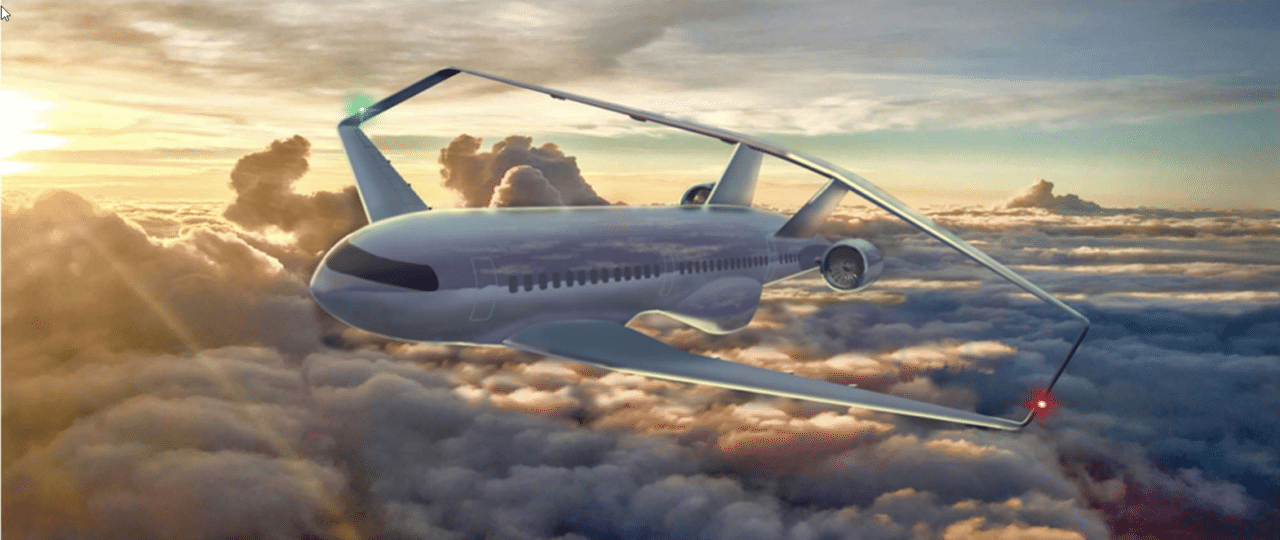
Concept image for the PARSIFAL box-wing aircraft (PARSIFAL)
With 2020 on the horizon and the Horizon 2020 program most of the way finished, European Commission aeronautics representatives and industry partners on that side of the Atlantic know where attempts to modernize and prepare for the future need to be focused: collaborating as widely as possible on innovative technology, such as electronic propulsion, supersonic travel and the project PARSIFAL box-wing aircraft.
Speaking at 2018’s AIAA Aviation Forum, European Commission’s Head of Unit for the directorate-general for research and innovation, Sebastiano Fumero, described Horizon 2020’s driving pillars of funding scientific research and education; providing industry leadership and facilitating communication; and supporting the solution of societal challenges such as health and energy.
Through its commitment to funding science and advancing the aerospace industry, it has helped to support endeavors such as project PARSIFAL, a sort-of acronym for Prandtlplane ARchitecture for the Sustainable Improvement of Future AirpLanes. The program’s goal is to prove that using unconventional design would allow a mid-sized commercial aircraft to attain the payload capacity of a higher-class aircraft without sacrificing fuel efficiency or size.

Planned power usage in flight (MAHEPA)
Another project to receive Horizon 2020 grants is MAHEPA– Modular Approach to Hybrid-Electric Propulsion Architecture, which aims to develop modular—and ultimately scalable—hybrid-electric power-trains that improve fuel efficiency and reduce emissions. Matej Andrejasic, head of aerodynamics for project lead Pipistrel Vertical Solutions, described an approach to flight that requires the use of the internal combustion engine only during take-off and climb, running on purely electric power during taxiing and landing, and either sustaining the battery or even charging it during the cruise and descent portions of the flight.
Beyond efficiency, modularity is a focus for MAHEPA: the system is designed to be platform-agnostic so the thrust generation modules, power generation module, main computer module and human interface module will all be installable anywhere.
Andrejasic also talked about upcoming scalability studies with the goal of powering 19- and 70-seat planes. He said that one test would be to use more of the current propulsion modules vs. fewer larger, more powerful modules to see which is more effective and guide future scaling to the goal of powering larger aircraft.
The expiration of the hybrid-electric aircraft project under Horizon 2020 is 2019, so there should be more information soon. For 2020, the European Commission’s Pablo Perez-Illana said there is a hyper- and supersonic speed aviation demo planned. There wasn’t as much information available about the supersonic plans, but he did mention the EU working with the U.S., Japan and Russia, who has a significant history in that space, as well as a just-started EU-only project looking into high-speed civil aviation with the goal of speeds up to Mach 8 at altitudes of 30 km.
A final initiative the panel discussed has less to do with specific technologies but may have more impact than any of them: The Agile project aims to cut down aircraft development time. Pier-Davide Ciampa from the German Aerospace Center (DLR) explained how and why that might be possible.
“The question I ask myself is: when is [a new aircraft] going to fly,” he said. “And usually the answer is this: 20XX. And the XX means a two-digit number which I think I will be retired by the time it enters into service.”
Development of new aircraft can take years, and Ciampa said that 60-80% of project time is just setup; the time has ballooned in recent decades as projects swell, more organizations get involved and bureaucracy slows things down. He said that Agile could reduce multidisciplinary development optimization time by 40% through reconfiguring processes, changing requirements, and increasing flexibility.

Pipistrel’s past electric vehicles (MAHEPA)
The project also concerns itself with best practices of production: If multiple aircraft projects are being created and development processes can be streamlined across them, that’s another area where timelines can be expedited. To that end, Agile recommends open-source frameworks and technologies and lots of cellular teams working on different tasks, collaborating as necessary, with the results being assembled as ready, so a more linear process isn’t being held up by one group.
That suggestion echoes the European Commission’s own views. The organization is attempting to facilitate more and more cooperation and communication both within its borders and around the world
Fumero said that works best for all parties. Innovation is faster and if the U.S. and Europe are both interested in hypersonics, for example, there is no reason for them to spend public money duplicating each other’s work if they could work together and be more efficient.